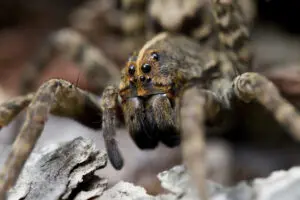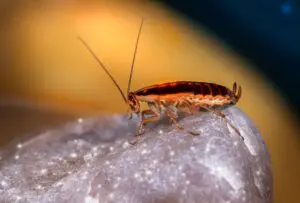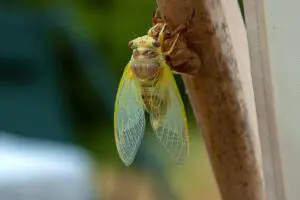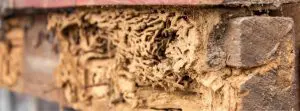
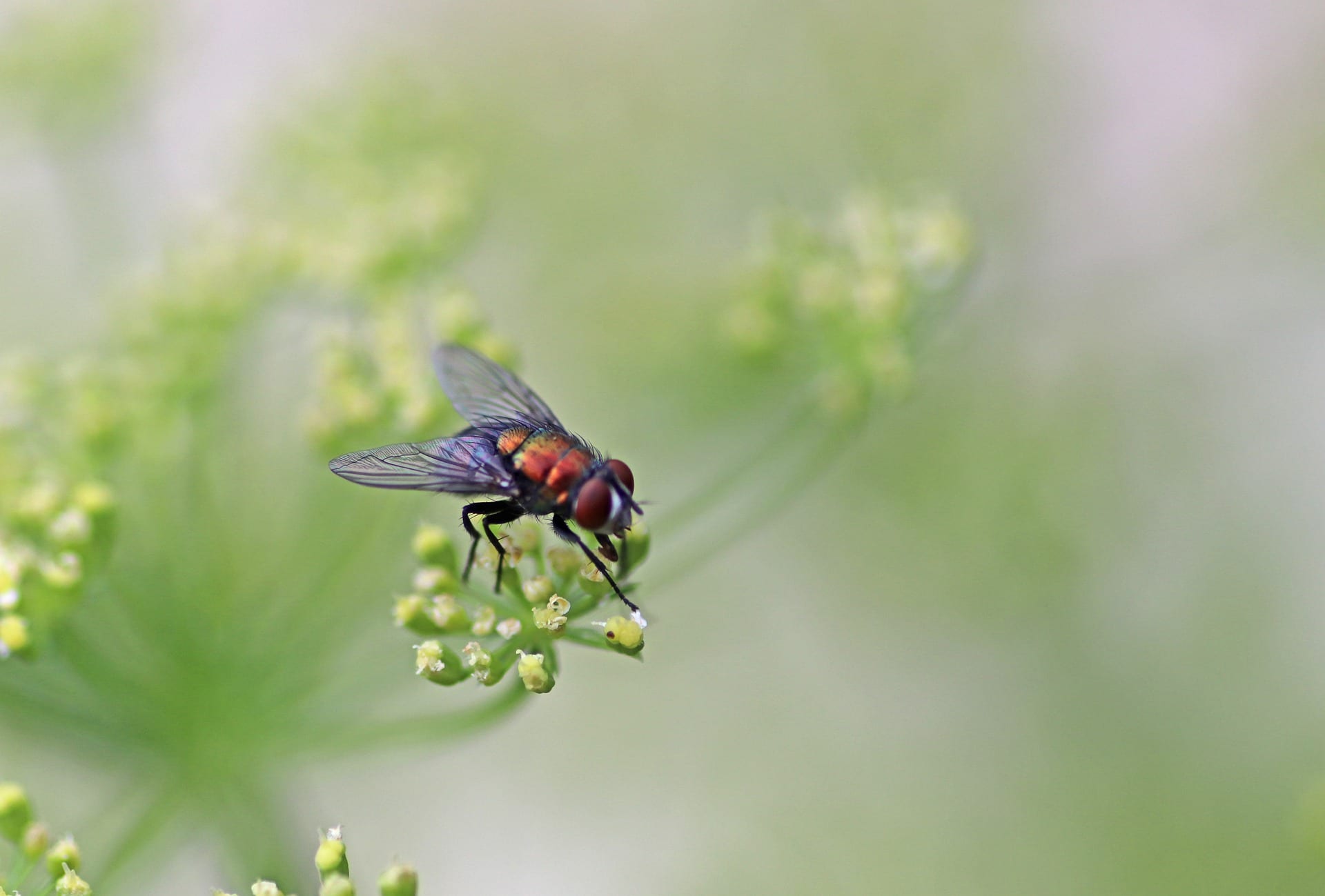
All fly life cycles develop via complete metamorphosis with egg, larval, pupal, and adult stages. Fly larvae have no legs and are commonly referred to as maggots. Outdoor breeding sites can sometimes be far from where the adults are found.
Flies have either of two types of mouthparts. They have piercing and sucking mouthparts like the mosquito or sponging/lapping mouthparts like house flies and deer flies. Those biting flies (other than mosquitoes) have scissor like jaws that cut into the victim allowing blood to pool and then lapping/sponging up the blood meal.
Biting Flies Identification:
Black Flies
- Black, gray, brown, or yellow in color with a distinctively humped back and shiny thorax
- Adults grow to be between 1 and 5 mm long
- Live virtually everywhere in the United States, thriving in moist environments like those around rivers & streams and must be in flowing water
- Painful bites cause swelling and possible skin rashes, and can cause strong allergic reactions
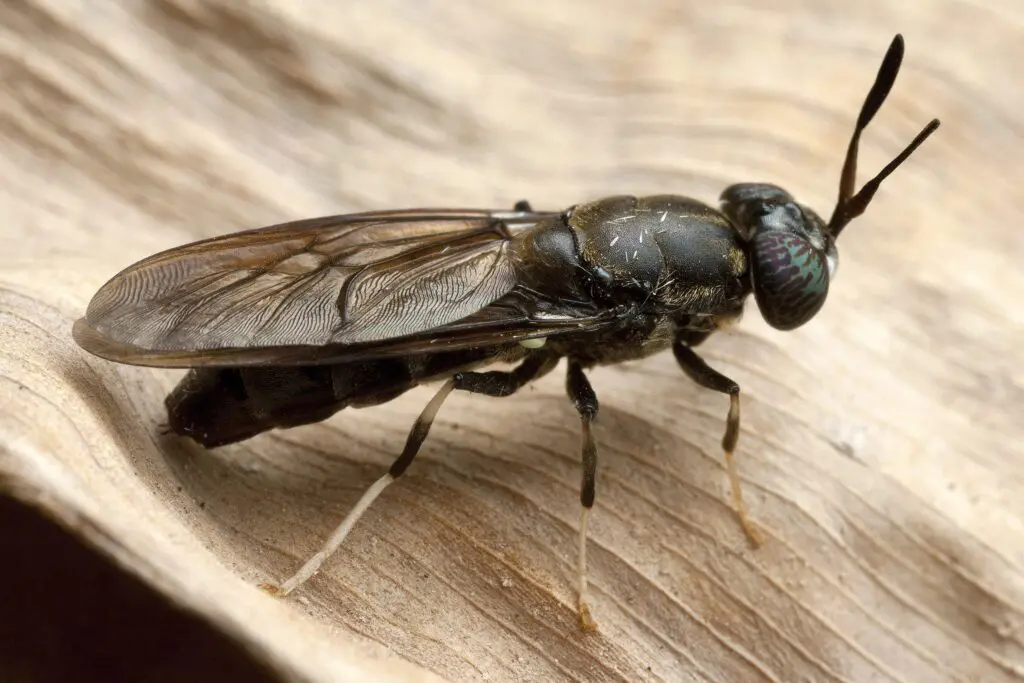
Deer Flies
- Generally light brown or gray in color, but some species have yellow and black stripes
- Eyes are large and oftentimes brightly colored, and they have clear wings
- Adults are between ¼ and ⅓ inches long
- Found across the United States, and tend to populate damp habitats like streams, ponds, and marshes
- Painful bites, during which they inject their saliva which contains an anticoagulant that can cause allergic reactions in some people
- Known to transmit diseases and parasites like tularemia, anaplasmosis, filariasis, anthrax, equine infectious anemia, hog cholera, and Lyme disease.
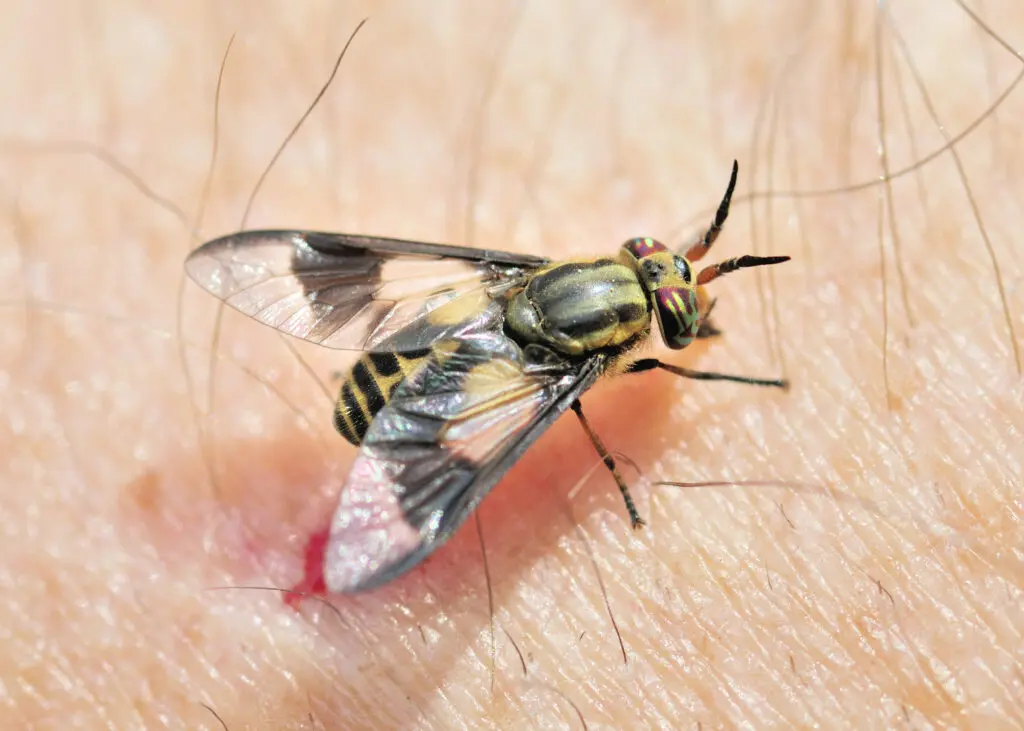
Horse Flies
- Black or gray in color with large, bright green eyes
- Adults typically grow to be between ½ and 1-¼ inches long
- Live in most areas of the United States, but their highest population is in Florida
- Prefer warm, damp areas, so they usually live near bodies of water like lakes, pools, and streams
- Painful bites that can cause allergic reactions or, when not properly treated, secondary bacterial infections
- Only known to transmit one disease- equine infectious anemia, also called swamp fever.
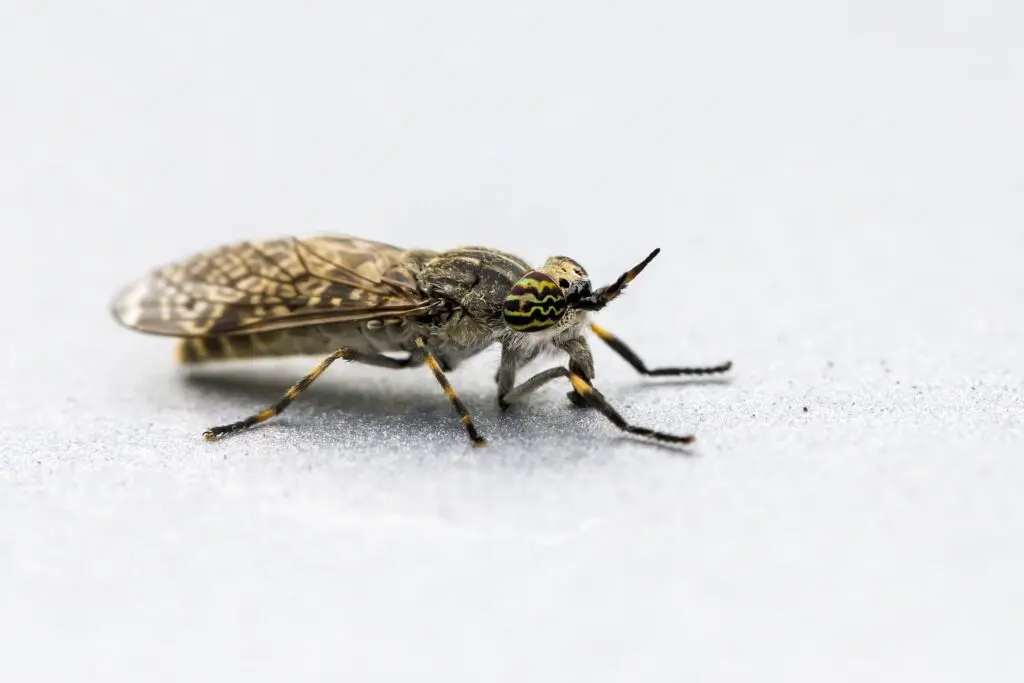
Mosquitoes
- Can be brown, black, gray, white, or silver
- Scaly with slender bodies and long, thin legs, and a prominent proboscis on their head
- Adults are usually between 3 and 9 mm long
- Found all across the United States, but they thrive in hot, humid environments,
- Most commonly infest wetland areas like ponds and swamps, but they can infest pretty anywhere that has a source of stagnant water
- Known to transmit a number of diseases, including Zika virus, encephalitis, West Nile virus, malaria, dengue, and Chikungunya virus
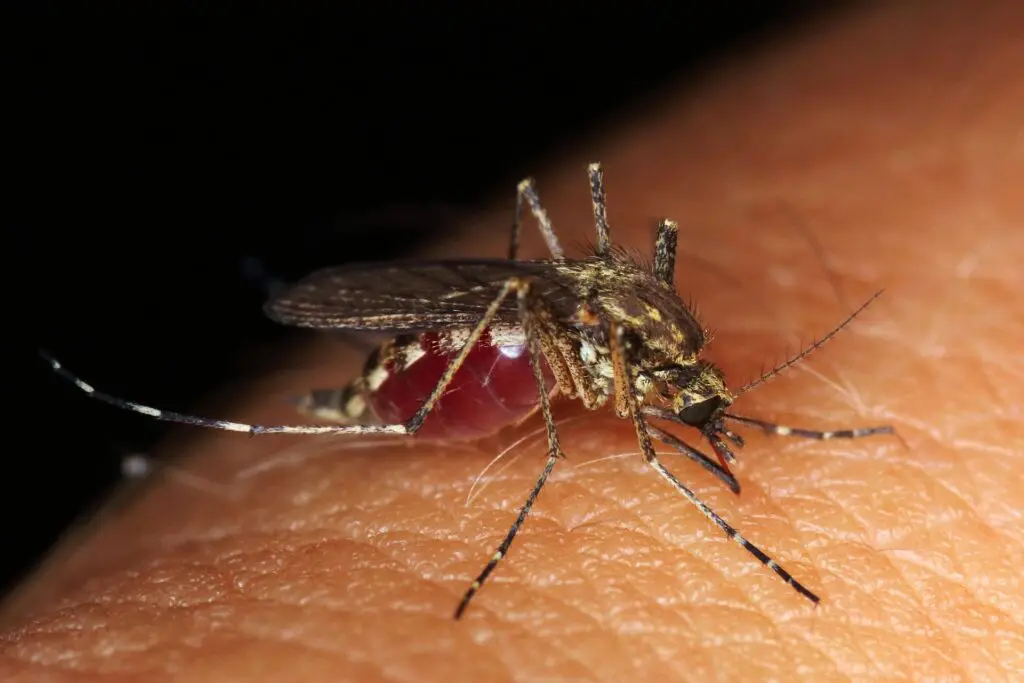
Filth Flies Identification:
House Flies
- Most common fly
- Gray with four black stripes on their thorax and slightly hairy bodies, as well as red eyes with thousands of individual lenses each, providing a wide range of vision
- Adult house files are typically between ⅛ and ¼ inches in size
- Found all over the United States, preferring warm, humid conditions
- Usually only encountered where there are humans
- Feed on feces, trash, and decaying substances
- Known to spread pathogens including salmonellosis, conjunctivitis, gastroenteritis, typhoid fever, cholera, dysentery, and tuberculosis
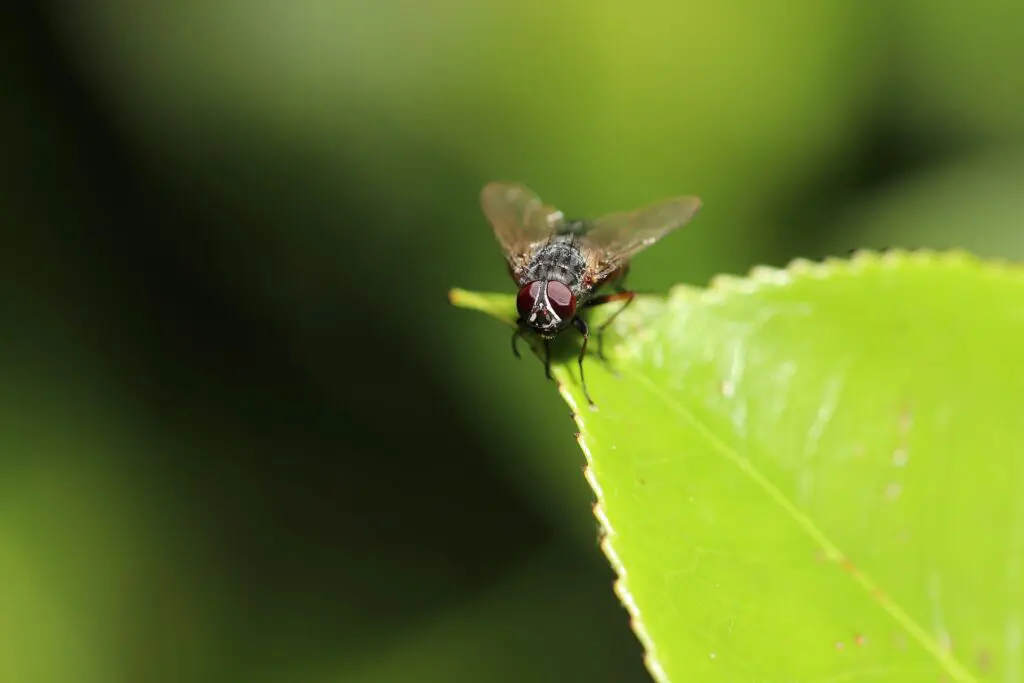
Blowflies
- Also called bottle flies
- Shiny bodies that range in color from blue or green to black or bronze
- Adults are usually between 8 and 10 mm
- Found throughout the United States, thriving in warm, humid climates that have low wind
- Larvae develop inside the bodies of dead animals, so the presence of blow flies indoors may be an indication of a dead animal within the structure
- Known to spread many bacteria, including those that cause severe diarrhea, and pathogens like anthrax, plague, tuberculosis, and tularemia
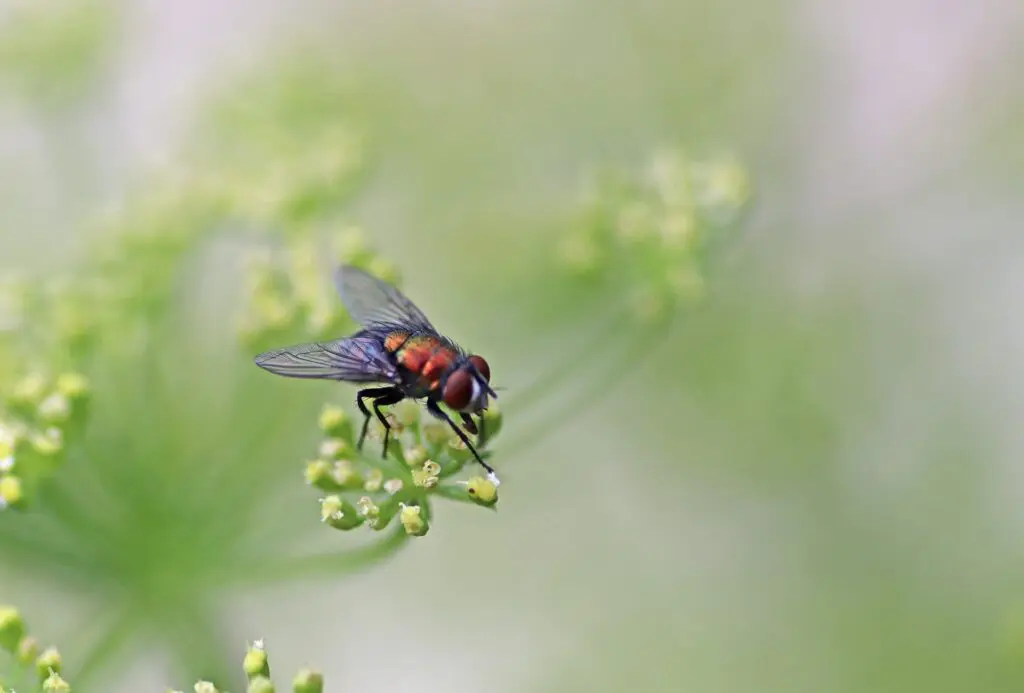
Drain Flies
- Nicknamed “sewer flies” due to their habitat, and “moth flies” due to their wings
- Tan or gray bodies with big, hairy wings
- Adults are typically between 1-½ and 5 mm in length
- Found in every state in the U.S.
- Live in and around drains, and their presence is a sure sign of a clogged or blocked drain
- Known to spread bacteria in areas near drains, like kitchens and food prep areas
- Can also trigger bronchial asthma episodes and cause myiasis, which is a parasitic infestation of human tissue

Fruit Flies
- Tan or brown in color with red or dark-colored eyes
- Only grow to be around 3 or 4 mm long
- Found virtually everywhere in the United States
- Live near ripe or rotting fruit, fermented items like beer and wine, mop buckets, garbage disposals, or drains
- Known to spread bacteria including E. coli, listeria, and salmonella.

Phorid Flies
- Nicknamed “humpbacked flies” due to their arched thoraxes and “scuttle flies” due to erratic running behavior
- Usually black or brown in color, but some are yellowish
- Adults grow to be between ½ and 5-½ mm in length
- Found throughout the United States wherever there is moisture, including plumbing and drains, garbage cans, basements, and crawl spaces
- Feed on rotting food, allowing them to spread bacteria that cause diseases like conjunctivitis, rotavirus, hepatitis A, gastroenteritis, salmonellosis, and tuberculosis
- Grow and develop within plumbing, so an infestation can cause expensive damage.
- The larvae feed on the scum layer present around the top opening of drains in sinks, tubs, and showers.
- Use of a biological drain cleaner such as BioDrain in a foam format and scrubbing of the drain opening is the best way to eliminate the breeding areas
If you find you still have questions about different types of flies, or if you think you have a fly problem around your home or business, call our experts at Excel today.




